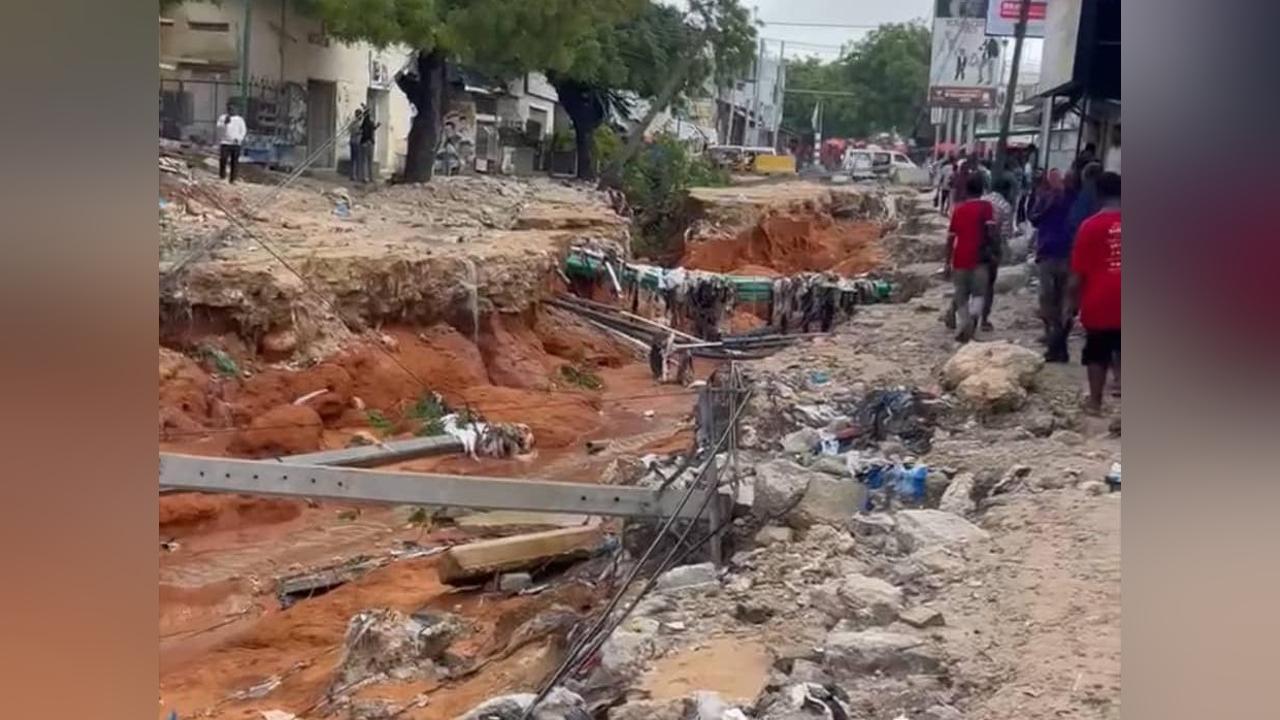Africa-Press – Uganda. Mogadishu is facing its worst flooding in living memory after days of intense rainfall submerged large parts of the city, destroyed infrastructure, and forced thousands of residents from their homes.
Entire neighbourhoods are underwater, roads have become rivers, and families are taking shelter on rooftops and elevated ground as the capital reels from the effects of extreme weather.
“In more than 14 years I have lived in Mogadishu and through history, I have never seen or heard of floods of such extent,” said Osman Mohamud, a resident of Wadajir, one of the hardest-hit districts.
The United Nations has described the event as a “once-in-a-century” flood, linking it to the combined influence of the El Niño climate phenomenon and a positive Indian Ocean Dipole.
These conditions have intensified seasonal rains, overwhelming the city’s drainage system and highlighting the vulnerability of its urban infrastructure.
Since October, floods have claimed at least 31 lives and displaced nearly half a million people across Somalia, according to the UN.
In Mogadishu alone, tens of thousands of families have lost their homes, with many unable to access food, clean water, or medical care due to damaged roads and collapsed bridges.
“The flooding has destroyed bridges and roads and cut the entire access to more than 70,000 families. There is a big fear of [a] humanitarian catastrophe,” said Ahmed Mohamed Islam, President of Jubbaland State.
The flooding has compounded existing crises in Somalia, a country already struggling with the impact of years-long drought, armed conflict, and widespread food insecurity.
The United Nations Office for the Coordination of Humanitarian Affairs (OCHA) warns that up to 1.6 million people may be affected by the heavy rains, with 1.5 million hectares of farmland at risk of destruction.
Aid agencies are attempting to reach affected communities with hygiene kits, water purification supplies, and emergency cash transfers.
However, access to many areas remains difficult due to washed-out roads and security challenges.
Mogadishu’s disaster underscores the urgent need for investment in flood-resilient infrastructure and urban planning that accounts for extreme weather.
As climate change increases the frequency and intensity of such events, Somalia’s cities remain dangerously exposed without adequate preparedness.
With rains forecast to continue, humanitarian responders say the priority is to prevent further loss of life and to stabilise conditions for displaced populations.
For More News And Analysis About Uganda Follow Africa-Press






